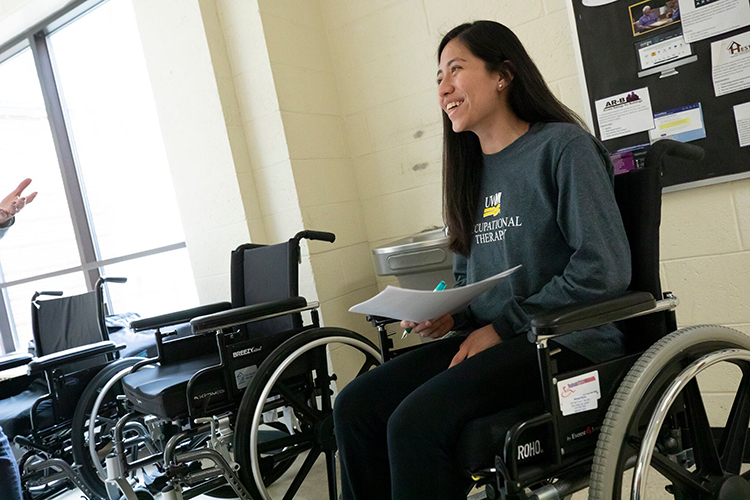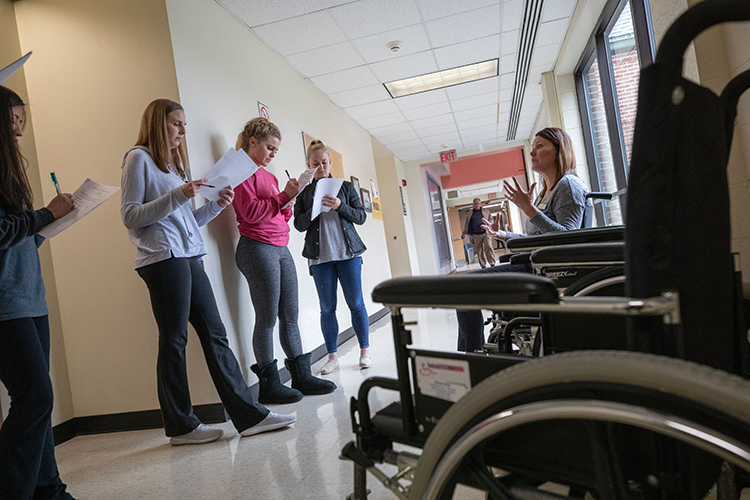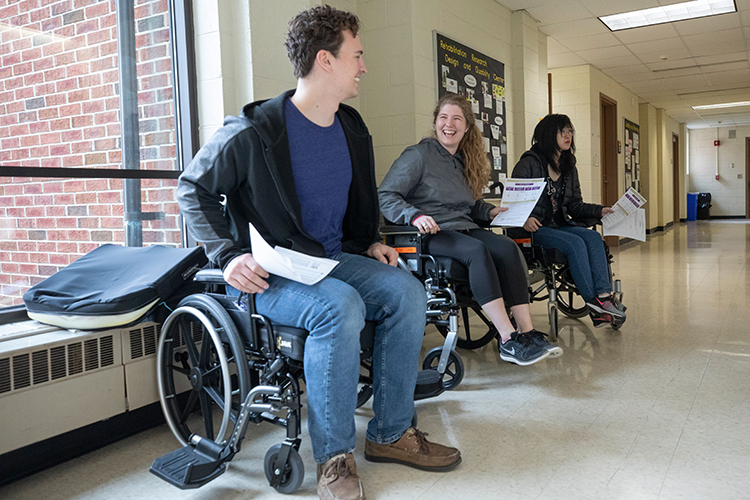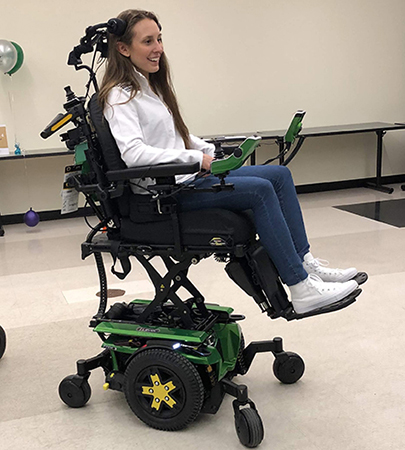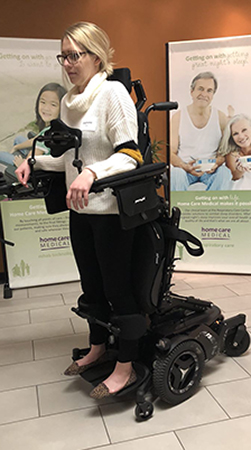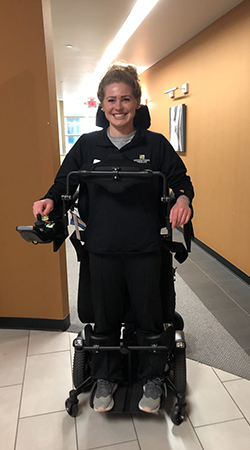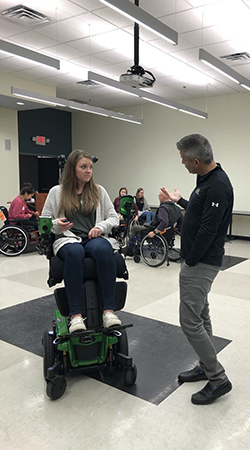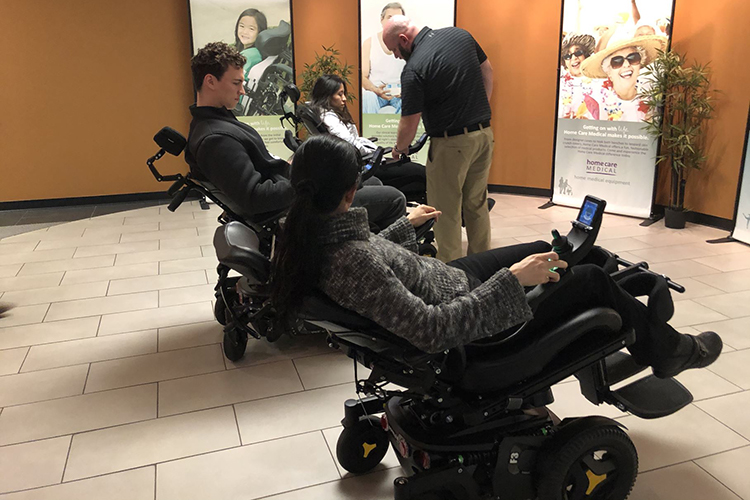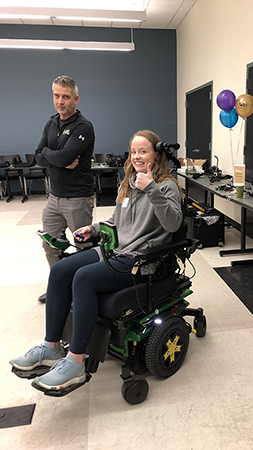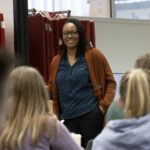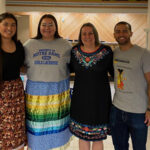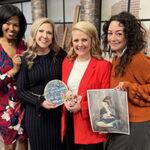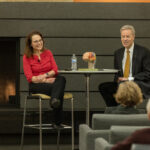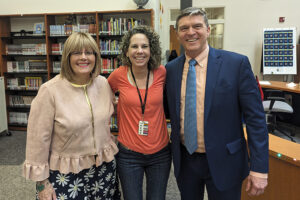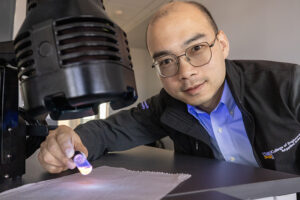Though almost 3.3 million people use wheelchairs every day in the United States, many think of a wheelchair as just that — a chair with wheels. In reality, wheelchairs are complex and varied pieces of technology that are matched to the needs of each user.
On Mobility Technology Day, master’s students in the occupational therapy program at UWM learn about that technology and get to try several types of wheelchairs. The annual event is part of the Assistive and Rehabilitation Technology course, which teaches about devices such as standing wheelchairs and wheelchairs controlled by the movement of the head for those with spinal cord injuries.
“It’s one thing to learn in a textbook, but to actually see, feel and work with the technology, it makes me more confident to go into this practice,” said Hailey Hoffman, a master’s student in occupational therapy.
Learning about what they may prescribe
With wheelchairs provided by Home Care Medical, a Wisconsin-based home care product and service supplier, as well as positioning accessories and seating from the Adaptive Engineering Lab in Milwaukee, students tried out the technologies that they may prescribe to future patients in their careers.
“Our seating and positioning instructional lab sessions bring this experience to our students so when they graduate, they have an exceptional picture of the possibilities of assistive technology solutions,” said Roger Smith, a professor of health sciences who leads the course with Michelle Silverman, clinical assistant professor.
During Mobility Technology Day, students tested things such as custom seating designs and positioning, transporting the chairs and the types of padding used. These details can make a world of difference to those using the chairs.
The course is a part of UWM’s Assistive Technology and Accessible Design Graduate Certificate program, one of the first accredited programs by the Committee on Accreditation for Rehabilitation Engineering and Assistive Technology Education.
Hands-on education
Students in the course, which is required in the occupational therapy program at UWM, have a lab each week where they learn about topics such as assistive technology for farming and ranching, augmentative communication, powered mobility and seating and positioning for wheelchairs.
“Everyone can look up products on the Internet, but I am a big believer of ‘hands-on’ education for learning assistive technology,” Smith said. “That way students can see, work with and experience the breadth of technology. In the case of seating and positioning technology for people with disabilities, it is not just ‘hands-on’ but ‘sits-on.’”
As a part of the lab, students also went to Home Care Medical’s facilities to test drive the power wheelchairs and higher-tech components to further familiarize themselves with assistive technology.
“I thought controlling a wheelchair with my head would be difficult, but it was actually the easiest one to operate, in my opinion,” one student said.
Beyond the hands-on experience, students participating in Mobility Awareness Day also gain connections and resources with companies such as Home Care Medical that they can use when they’re out in the field, Silverman and Smith said.
“It is just another way that the students learn how much of an impact they will have on their clients when they are out practicing,” said Silverman.
